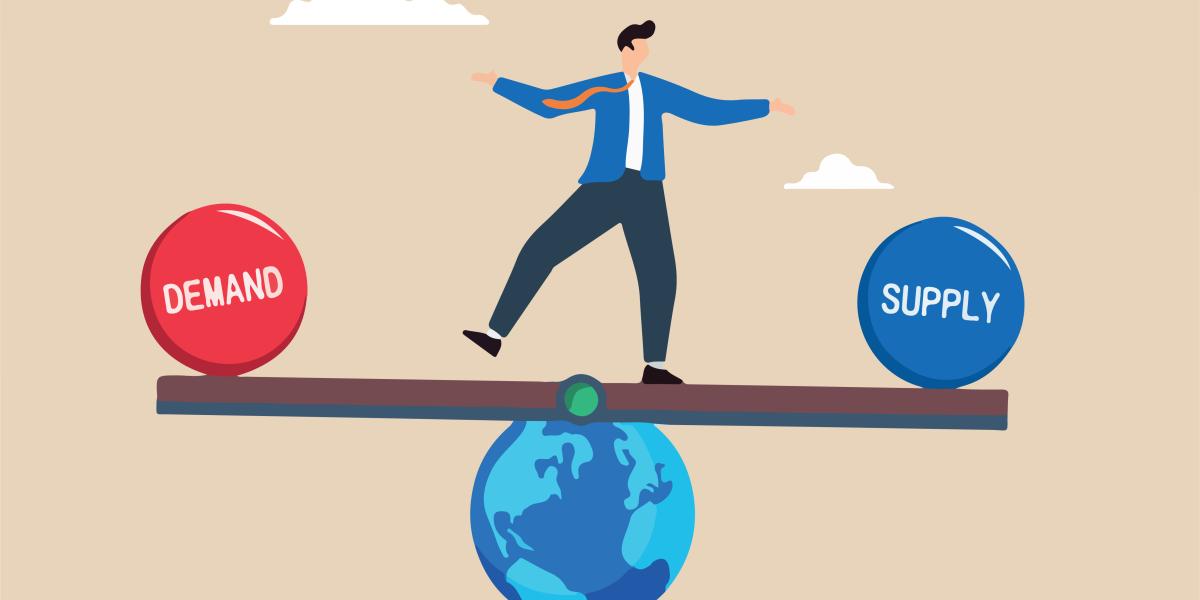There are a few reasons why the word equilibrium stirs up so much debate among economists. One reason is that it is obvious that we live in a world of constant change. Preferences, total stocks of goods, productivity, and known technologies change in unpredictable ways, disrupting markets in ways that make it impossible to observe and very difficult to conceive of anything resembling stability.
The way Austrian economists in the Menger, Böhm-Bawerk, Wicksteed, Fetter, and Rothbard tradition have approached the issue is to analyze markets with an eye toward what is and isn’t settled or stable at different points in the market process. They do not approach equilibrium by asking what market participants’ characteristics must be to create an equilibrium. That approach gives you things like the perfect competition model, which requires a host of conditions that could never apply to the real-world.
Austrian economists start with the real world and ask, “What has been established and what changes must take place?”
This approach has led to four main equilibrium constructs that apply to markets and one that applies to the personal economy.
The Personal State of Rest
In the personal economy, we act to bring about a desired state of affairs. We have some “felt uneasiness” about our current state of affairs that can be alleviated through action. For example, suppose you are thirsty; you perceive a causal connection between the bottle of water in your possession and the quenching of thirst; you drink some of your water and satisfy your end. Upon completing this action, you achieve a personal state of rest. There was some disquieting, unstable aspect of your circumstances that has been eliminated through action.
Of course, taking one sip of water doesn’t eliminate your need to quench your thirst for all time, and it certainly doesn’t permanently satisfy all of your ends. After your sip of water, some new “felt uneasiness” emerges and new desired ends come into your mind and you embark on new actions, always seeking to attain the best possible state of affairs that you ascertain is both feasible and involves the lowest opportunity cost. After all, using means to satisfy ends implies that those means cannot be used to satisfy other ends. But the point is that this “equilibrium” is momentary. It is a state of rest, because some uneasy aspect of your life has been resolved, but it quickly fades into the past and you are confronted with new desired states of affairs that require your action to achieve.
The Plain State of Rest
The social economy analog of the personal state of rest is the plain state of rest. Here, two individuals notice that they can both achieve a desired state of affairs through exchange. A has X but would rather have Y; B has Y but would rather have X. They trade. If we look at it through the perspective of just one of the trading partners, we see that a personal state of rest is achieved: “I wanted X more than Y and this other person agreed to give me X if I gave them Y. I’ve used the means at my disposal to achieve a desired state of affairs.”
Since both of them can say that (reversing the goods according to the respective preferences of the trading partners), we call it something else: a plain state of rest. But something else has occurred that we could not say about the personal state of rest: the quantities of the goods demanded match the quantities of the goods supplied. A demanded Y and B supplied Y; B demanded X and A supplied X. Economists call such a phenomenon a “cleared market.” So, the plain state of rest, which occurs after every voluntary exchange, brings about a cleared market.
Notice that I did not need to make any assumptions about the traders’ knowledge or expectations to come to that conclusion. The plain state of rest emerges as a consequence of whatever preferences, knowledge, and expectations the traders have. The exchange by itself demonstrates the fact that both traders expected to benefit. The exchange by itself demonstrated the quantities supplied and demanded. The exchange by itself demonstrates that the price of X was Y and the price of Y was X.
The ephemeral quality of the personal state of rest applies to the plain state of rest. This one exchange between A and B does not permanently absolve them of the need to act. After trading with B, A will certainly find other people, maybe C, who has what A wants and wants what A has. The plain state of rest fades into the past and new potentially mutually-beneficial trades confront market participants.
The Wicksteedian State of Rest
The next equilibrium construct is called the Wicksteedian state of rest (see here, pp. 219-228). Here things get a little more complicated. We must ask, “What is achieved in the PSR and what remains to be changed?” One aspect of the PSR that instigates further changes is the fact that PSR prices for the same good will likely differ. B charges X for Y, but, hey, over there, C is charging X-1 for Y. Maybe a more concrete example is in order: Fred’s Grocery is charging $3 per dozen eggs but John’s Grocery is charging $2.50 per dozen eggs. To the extent that egg buyers notice this price discrepancy and consider the eggs offered for sale from both grocery stores as equally serviceable in satisfying their ends that can be satisfied by eggs, then they will flock to John’s store and avoid Fred’s more expensive eggs. Fred has an incentive to lower his price. John has an incentive to increase his price. This tendency for prices of the same good to equalize remains in the PSR, but is eliminated in the WSR, when the prices equalize.
Why is it called a state of rest? It’s because one thing that was unsteady was steadied. Different prices for the same good instigate further changes because individuals want to achieve better states of affairs by forgoing less desired states of affairs. The consumer thinks: “By buying lower priced goods, I forgo less.” Fred thinks: “By lowering my selling prices to get closer to my competitors’ prices, I can earn more revenue.” John thinks: “By increasing my selling prices to get closer to my competitors’ prices, I can earn more revenue.” Once the price of eggs equalizes, nobody has such an opportunity. Of course, this is a simple example, but the same thing applies across the economy and especially in finance. Arbitrage opportunities are quickly noticed and exploited, and the act of exploiting them eliminates the price spread that motivated the trades in the first place.
The Final State of Rest
The next equilibrium construct—the final state of rest—is not achievable, but we can still think about it by asking, “What’s established in the WSR and what further changes can happen?” While price spreads between sellers of the same good are equalized in the WSR, price spreads in production remain. Arbitrage within goods is no longer possible in the WSR, but price spreads between factors of production and the goods they produce exist.
Entrepreneurs will seek profits and avoid losses. In so doing, they bid against each other for factors of production, but no entrepreneur will bid more than their anticipated discounted marginal revenue product for a given factor. A cent more than this upper limit would involve losses. Since there are competing uses for the same factors, the tendency is for the prices of factors to be bid up to their DMRP until no entrepreneur expects to be able to use the factor profitably by bidding a cent more.
The reason why this state of rest, in which there are no more known profitable production projects because factors have been totally capitalized, is not attainable is because it takes too long. Preferences, known technologies, total stocks of goods, expectations, etc. will change and disrupt the underlying market conditions that tend toward an FSR before it is reached. But just because it isn’t attainable doesn’t mean that the concept is meaningless. The FSR allows us to analyze critical aspects of the market process (entrepreneurship, production, factor pricing, etc.) even though that process is never completed.
The Evenly Rotating Economy
The last equilibrium construct is the evenly rotating economy. An ERE is when all lines of production are in an FSR and no one expects any changes to market conditions ever. If the FSR is impossible, the ERE is even more impossible. In the ERE, the same thing happens every day, like the movie Groundhog Day, but without the main character who can actually change things. The ERE is so impossible that weird things happen: money disappears (or becomes a mere numéraire), action itself disappears, time has no meaning, there is no human agency, everybody is an automaton, etc.
The question you are probably asking right now is “Why?” Why have such a crazy, impossible, mind-melting equilibrium construct? The main reason for the ERE is to distinguish between interest and profit. In the ERE, interest remains due to time preference, but profits go away. Thus, uncertainty about the future is what allows profits and losses. Another use of the ERE is to use it as a starting and ending point for analyzing the full consequences of some change. For example, we might want to think through all of the consequences of an increase in the supply of some natural resource. We start with one Groundhog Day equilibrium and think about what happens on the way to the next Groundhog Day equilibrium. It allows us to isolate and fully account for all the consequences of a particular change.
Conclusion
These constructs are not held up as an ideal. They are not a standard by which we can judge real-world market outcomes as inferior or inefficient. They are just tools that allow economists to think through the market process and identify what’s what.
So, do markets ever reach equilibrium? It depends. Plain states of rest are established with each exchange. Wicksteedian states of rest can be reached, but it takes a little time for price discrepancies to be noticed and eliminated by arbitrage. The final state of rest cannot be reached—there are just too many things that will change before all the factors of production in a particular line are earning their exact discounted marginal revenue product. The ERE is impossible, but has important uses in economic theory.
Will the debate about market equilibrium ever reach a state of rest? Unlikely.


























